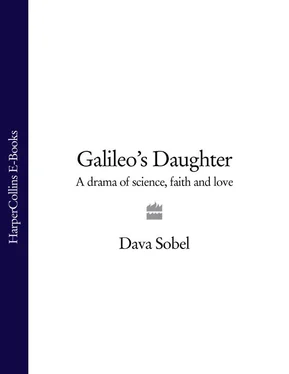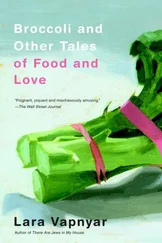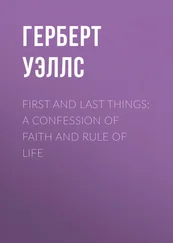Fatefully during his Paduan idyll, while visiting friends outside the city, Galileo and two gentleman companions escaped the midday heat one afternoon by taking a siesta in an underground room. Natural air-conditioning cooled this chamber by means of a conduit that delivered wind from a waterfall inside a nearby mountain cave. Such ingenious systems ventilated numerous sixteenth-century villas in the Italian countryside but may have admitted some noxious vapours along with the welcome zephyrs, as apparently occurred in Galileo’s case. When the men awoke from their two-hour nap, they complained of various symptoms including cramps and chills, intense headache, hearing loss and muscle lethargy. Within days, the strange malaise proved fatal for one of its victims; the second man lived longer but also died of the same exposure. Galileo alone recovered. For the rest of his life, however, bouts of pain, later described by his son as arthritic or rheumatic seizures, would strike him down and confine him to his bed for weeks on end.
Under happier circumstances – although no one knows precisely when or how – Galileo in Padua met Marina Gamba, the woman who shared his private hours for twelve years and bore him three children.
Marina did not share his house, however. Galileo dwelled on Padua’s Borgo dei Vignali (renamed, in recent times, Via Galileo Galilei). Like most professors, he rented out rooms to private students, many of them young noblemen from abroad, who paid to board under his roof for the duration of their private lessons with him. Marina lived in Venice, where Galileo travelled by ferry at the weekends to enjoy himself. When she became pregnant, he moved her to Padua, to a small house on the Ponte Corvo, only a five-minute walk away from his own (if one could have counted minutes in those days). Even after the ties between Marina and Galileo were strengthened by the growth of their family, their separate living arrangement remained the same.
Suor Maria Celeste Galilei, neé ‘Virginia, daughter of Marina from Venice’, was ‘born of fornication’, that is to say, out of wedlock, according to the parish registry of San Lorenzo in the city of Padua, on 13 August 1600, and baptised on the 21st. Marina was twenty-two on this occasion, and Galileo (though no mention divulges his identity), thirty-six. Such age discrepancies occurred commonly among couples at that time. Galileo’s own father had reached forty-two years before taking the twenty-four-year-old Giulia as his bride.
The following year, 1601, again in August, a registry entry on the 27th marked the baptism of ‘Livia Antonia, daughter of Marina Gamba and of—’ followed by a blank space.
After five more years, on 22 August 1606, a third child was baptised, ‘Vincenzio Andrea, son of Madonna Marina, daughter of Andrea Gamba, and an unknown father’. Technically an ‘unknown father’ for not being married to the mother, Galileo nevertheless asserted his paternity by giving the baby both grandfathers’ names.
Galileo recognised his illegitimate children as the heirs of his lineage, and their mother as his mate, although he ever avoided marrying Marina. Scholars by tradition tended to remain single, and the notations in the parish registry hint at circumstances that would have strengthened Galileo’s resolve. After all, she was ‘Marina from Venice’ – not from Pisa or Florence, or Prato or Pistoia, or any other town within the bounds of Tuscany, where Galileo determined to return some day. And her heritage, ‘daughter of Andrea Gamba’, did not put her on a par with the poor but patrician Galilei family, whose ancestors had signed their names in the record books of a great city government.
[III] Bright stars speak of your virtues
AS HIS PADUAN CAREER increased its brilliance in the early years of the seventeenth century, Galileo continued struggling to meet all his expensive family responsibilities. In 1600 his younger brother, the musical Michelangelo, was invited to play at the court of a Polish prince, and despite the maturity of his twenty-five years, he tapped Galileo for the clothing and money he needed to make the trip. Also in 1600, the same year Galileo saw the birth of his daughter Virginia, he found a husband for his sister Livia. Upon her marriage to Taddeo Galletti in 1601, Galileo negotiated the dowry, paid for the ceremony and the wedding feast, and also bought Livia’s dress, which was made of black Naples velvet with light blue damask that cost more than one hundred scudi. Then, in 1608, Michelangelo got married, moved to Germany, and reneged on his promised share of the sisters’ dowry contracts, precipitating a legal action by brother-in-law Benedetto Landucci, who complained of being cheated out of his expected sum.
Fortunately, Galileo’s endeavours led him to a new source of supplemental income. In the course of teaching military architecture and fortification to private students, he had invented his first commercial scientific instrument in 1597, called the geometric and military compass. It looked like a pair of metal rulers joined by a pivot, covered all over by numbers and scales, with screws and an attachable arch to hold the compass arms open at almost any angle. By 1599, after various modifications, the device functioned as an early pocket calculator that could compute compound interest or monetary exchange rates, extract square roots for arranging armies on the battlefield, and determine the proper charge for any size of cannon. Shipwrights at the nearby Venetian Arsenale also adopted Galileo’s revolutionary compass, to help them execute and test new hull designs in scale models before building them full-size.
Galileo crafted the first few compasses himself, but soon required the services of a full-time, live-in instrument maker to meet the popular demand. The hired craftsman moved into Galileo’s house with wife and children in tow, to work in exchange for salary, room and board for his whole family, all production materials, and a two-thirds share of the price of the finished brass instruments, which sold for five scudi each. Galileo would not have made much money under these conditions, except that he charged every visiting student nearly twenty scudi to learn how to use the compass, and all of this was his to keep. At first he gave out a personally handwritten instruction manual as a learning aid; then in 1603 he hired an amanuensis to help generate enough copies – until three years later, when he hit on the idea of publishing the booklet for sale with the instrument.
He called his treatise Operations of the Geometric and Military Compass of Galileo Galilei, Florentine Patrician and Teacher of Mathematics in the University of Padua. Its 1606 title page notes that the book was printed ‘in the Author’s House’ and cannily dedicated to the future grand duke of Tuscany, Don Cosimo de’ Medici.
‘If, Most Serene Prince,’ Galileo addressed his young patron in the dedication, ‘I wished to set forth in this place all the praises due to your Highness’s own merits and those of your distinguished family, I should be committed to such a lengthy discourse that this preface would far outrun the rest of the text, whence I shall refrain from even attempting that task, uncertain that I could finish half of it, let alone all.’
Cosimo, a lad of sixteen, had become Galileo’s most elite private pupil the previous summer. The heir apparent to the House of Medici, he bore the name of his resolute grandfather, Cosimo I, who had expelled all rival and foreign influences from Florence, annexed the city of Siena to the Duchy of Tuscany, and then pressured Pope Pius V to create for him the title of grand duke in 1569. Thus the self-made Medici family, who had been successful bankers holding high government positions in the old Republic of Florence throughout the fourteenth and fifteenth centuries, assumed the aura and authority of royalty in Galileo’s time.
Читать дальше












